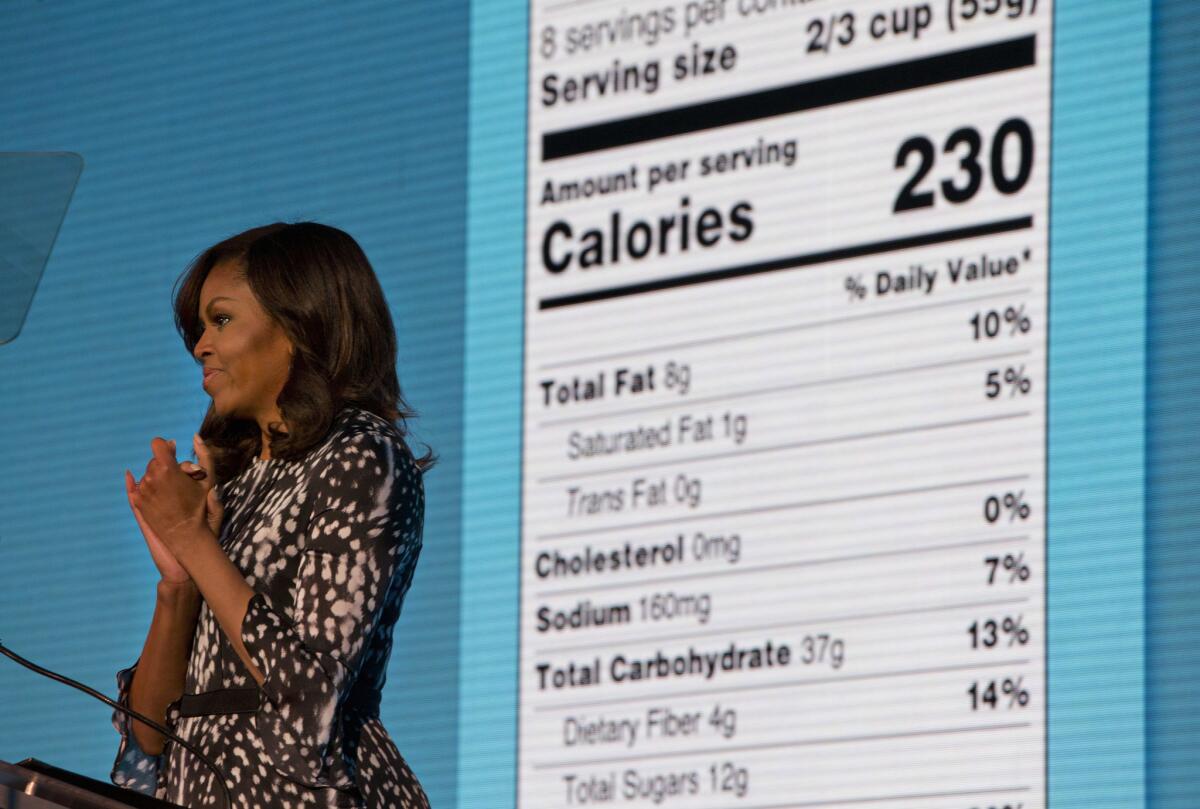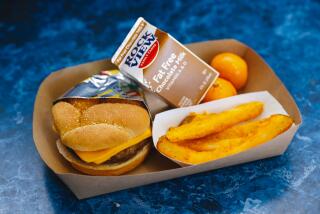FDA super-sizes key information in nutrition labels for packaged foods

Federal officials are super-sizing key information on nutrition labels for packaged foods and adding additional data to help Americans make healthier choices as their appetites -- and many products marketed to fill them -- have grown.
The updated Nutrition Facts labels, which will be required in mid-2018, feature larger type for calories, the size and the number of servings as well as a new category -- added sugars.
“This is going to make a real difference in providing families across the country the information they need to make healthy choices,” said First Lady Michelle Obama.
See more of our top stories on Facebook >>
She unveiled the modernized labels Friday at a summit held by the Partnership for a Healthier America, a group working to find ways to end childhood obesity.
Obama has focused on healthier eating and exercise during her husband’s term in office, and the White House proposed updating the labels two years ago.
Packaged foods have listed key ingredients and other information on standardized nutrition labels since 1994 under a mandate from the Food and Drug Administration,
But the eating habits of Americans have changed over the last two decades. So in an era of super-sized fast-food meals and Super Big Gulp sodas, the FDA decided some information on the labels needed to be updated and amplified.
When serving-size requirements were last published in 1993, for example, a serving of ice cream was 1/2 cup and a serving of soda was 8 ounces. Those are being updated to 2/3 cup and 12 ounces, respectively, to better reflect the amounts people are consuming, the FDA said.
The law requires serving-size information to reflect how much people actually eat, not how much they should eat.
The change in serving sizes alters the number of servings contained in a food package, and that information is given more prominence with a larger typeface at the top of the label.
The most visible change is much larger type for the amount of calories per serving.
The more prominent display of calories, serving size and servings per container “drives consumers’ attention to these important elements when making informed food choices,” the FDA said.
Among less prominent changes is a new line showing how much sugar has been added to the product. New dietary guidelines call for reducing the amount of added sugars consumed daily.
Most food and beverage manufacturers have opposed including information on added sugars. They argued that there is no chemical difference between added sugars and naturally occurring sugars.
The Grocery Manufacturers Assn., an industry trade group, said Friday that the updated labels were “timely as diets, eating patterns and consumer preferences have changed dramatically.”
The group’s chief science officer, Dr. Leon Bruner, said the FDA needed to get the word out about the updates.
“Because consumers could be confused by the new label with its numerous changes, a robust consumer education effort will be needed to ensure that people continue to understand how the revised label can be used to make informed choices and maintain healthful dietary practices,” he said.
The American Heart Assn. praised the new labels, saying the information would help consumers make eating choices that could reduce their risk of heart disease and stroke.
MORE FROM BUSINESS
Stocks climb in early trading, led by technology and banks
Got a funny video? Jukin Media will find you — and pay you
Why bids for Yahoo might come in $6 billion lower than expected
Follow @JimPuzzanghera on Twitter
More to Read
Inside the business of entertainment
The Wide Shot brings you news, analysis and insights on everything from streaming wars to production — and what it all means for the future.
You may occasionally receive promotional content from the Los Angeles Times.











